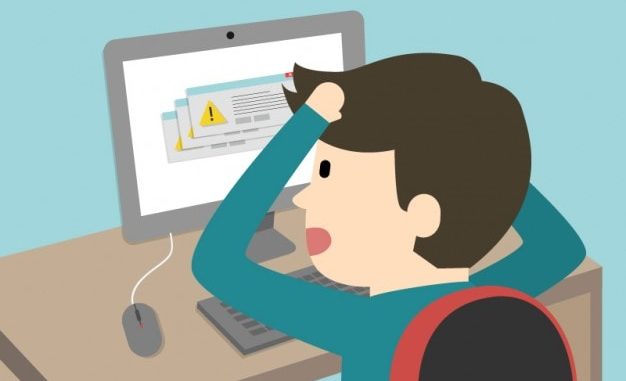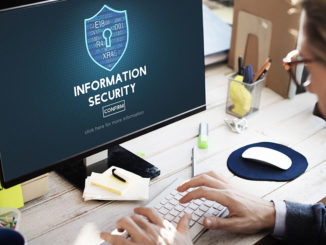
When you take a look at our lives in the 21st century, you can see that the internet means so much to us. We change the information basically in seconds. What is the internet actually? Easily explained, it is a global network of the computers. Those computers are connected with some sorts of protocols. Can you imagine how much computers are nowadays connected? So, it is very obvious how easily can some malware be transferred. Do you want to stay protected in that whole net, right? We might help!
Let us introduce you the Comptia security+ tutorial, You will learn here how to properly deal with the network, and of course how to stay safe.
Let’s start with talking about the Firewalls! What is the firewall? It is a hardware or software, which you can get for your network in a purpose to filter some traffic. It will control what sort of traffic is coming and leaving your network or even host. It is very important if you want to stay safe in a cyber world! Besides controlling which traffic is going through our network, the Firewall always has the intention to detect the network in which a user works. They can also find out anything which has the intention of interfering with the personal information.What else can we learn about them in this quick security+ tutorial?
There are three different types of Firewalls. The first one would be The Packet Inspection Firewall. This type deals with the data. It decides which can pass and which may not. Searching for the viruses, spams, intrusions…
Okay, this is the first check from the Firewall that needs to be done. The second would be the Application Filtering Firewall. This is actually some sort of the application which visits the network. If it happens that it coughs a suspicious element, it would prevent it to enter the user’s network. Stateful Firewalls. This firewall enables the stable state of the outgoing traffic and also checks it.
So, that would be all about the firewalls in our Comptia security+study guide! But don’t worry, we are not done yet, there is so much more to see.
As you have already heard, there are so many different types of computer attacks. Malware, phishing, SQL injection attacks, XSS, Denial of Service, Man-in-the-middle, session hijacking, credential reuse and so on. Frightening, right? It is, even worse when you experience it. But, we won’t let it. Let’s continue with our Comptia security+online training and find out more how to stay safe in nowadays world!
We will take a closer look at the routers now. What are they actually? Can you imagine how are the data packets moved between the different computer networks? By routers, exactly. They just need to be properly configured, because without such action you would face some sort of the congestion of the data. The routers facilitate the delivery of the data packets which are based on the IP address. Did you know that the routers can also be harmed by the different types of computer attacks? That is why you need to set a great and strong password for it.
How does the router work actually? It works in the two different stages. The first one would be the Control Plane. It diverts and strips some non-essential activities from the Routing Information Base if they appear. The essential activities are sent to the Forwarding Information Base. Later, there, they would be used by the forwarding plane (which is actually the second stage of the router).
I am pretty sure that you have heard about many different types of routers. The best ones are usually used in some academic or research facilities. It is a good thing to mention that the password should always stay a secret.
We will talk about the switches now. It allows the networked device to communicate to each other. There are the two categories of it, the Managed Switches and the Unmanaged ones.
Why are we talking about the switches here? Because people need to understand its difference with a router. The Switch is creating the network, and the Router is connecting them. Easily explained for your best understanding!
Besides creating and connecting the network, we also need a device which would balance it, right? Here we have the Load Balancers. They also prevent the system crash.
I will introduce you another important part of our tutorial. It would be Proxies! You have probably heard a lot about them in the different areas. Yes, they are very important. You don’t want to lose your personal data and information because of some cybercriminal right? In that case, we have proxies. They protect the information. Imagine a system on the network which wants to get to the internet. It just cannot do it doesn’t have the proxy address for it. It can have some other names, like the Third Party Server. There are many kinds of the proxies and some of them are Caching Proxy Server, Hostile Proxy, Web Proxy, Anonymizing Proxy Server…
What about the Reverse Proxy Server? This is a type of it which recovers the resources on the client’s behalf from one to even more servers. They are greatly protecting that server and allowing it to go through some requests that arrive especially if they are coming from the legitimate user. It can also block some information if that information is actually coming from some malicious sources, which the proxy easily discovers. All in all, it also helps in reducing the load which happens on the original servers. It does it by caching as great as the dynamic content. What a powerful tool!
I hope you have learned a lot about this course! What is CompTIA? Let’s say a few words before we end our tutorial. This is a non-profit trade association. Its main purpose is to issue the professional certifications for the IT industry. I must say that it is considered one of the information technology’s top trade association! Hope you have learned a lot from the best sources!

